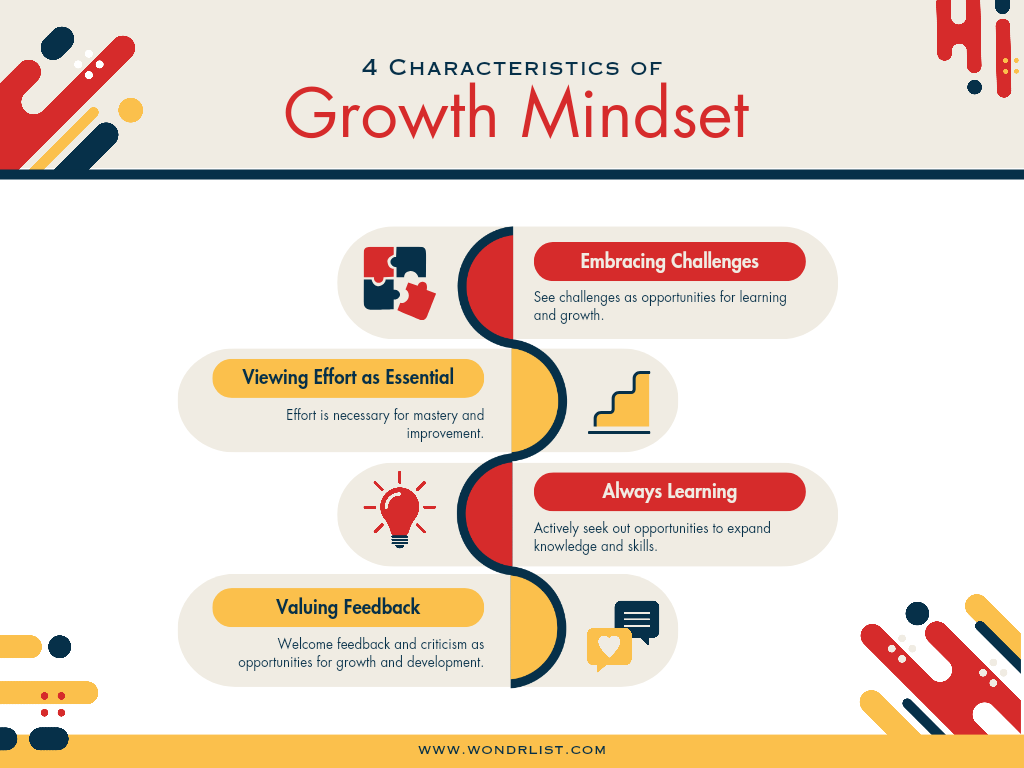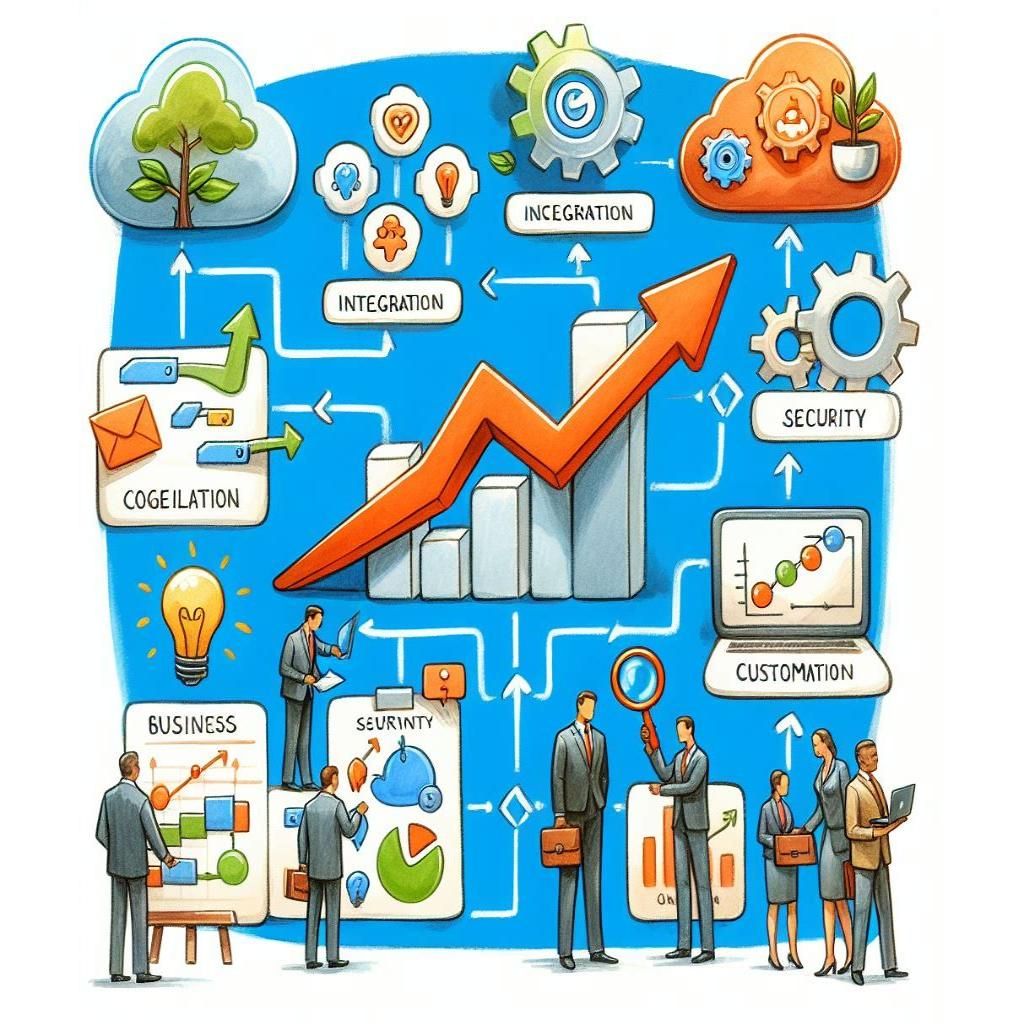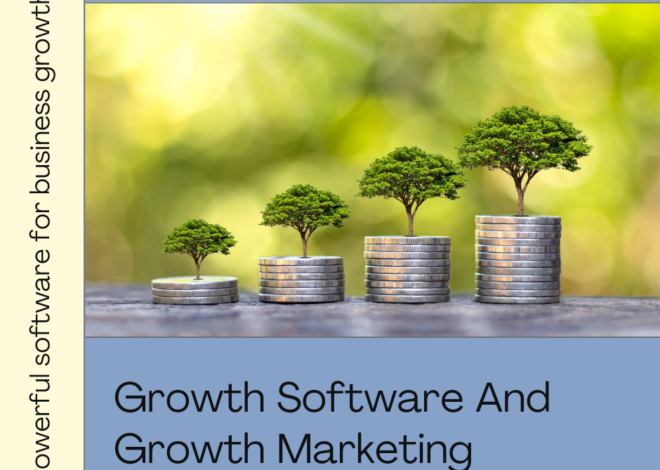
The Ultimate Guide to Growth Software: Tools for Every Stage
The Ultimate Guide to Growth Software: Tools for Every Stage
Are you an entrepreneur looking to scale your business to new heights? Or perhaps you’re a marketer seeking innovative ways to attract and retain customers? In today’s fiercely competitive landscape, leveraging the right growth software can be a game-changer. From ideation to expansion, these tools have the power to streamline processes, enhance customer experiences, and ultimately, drive sustainable growth.
In this guide, we’ll explore the world of growth software, uncovering the best tools for every stage of your business journey. Buckle up and get ready to supercharge your growth strategies!
4 Characteristics of a Growth Mindset
Before we dive into the specific tools, it’s crucial to cultivate a growth mindset – a mindset that embraces challenges, values effort, seeks continuous learning, and welcomes feedback. Here are four key characteristics of a growth mindset:
- Embracing Challenges: Individuals with a growth mindset see challenges as opportunities for learning and growth, rather than obstacles to be avoided.
- Viewing Effort as Essential: They understand that effort is necessary for mastery and improvement, and they are willing to put in the work required to achieve their goals.
- Always Learning: Those with a growth mindset actively seek out opportunities to expand their knowledge and skills, recognizing that there is always room for improvement.
- Valuing Feedback: They welcome feedback and criticism as opportunities for growth and development, using them to identify areas for improvement and make necessary adjustments.

Adopting a growth mindset is essential for leveraging the full potential of the software tools we’ll discuss in this guide. It fosters an attitude of continuous improvement, innovation, and resilience, enabling you to navigate the ever-changing business landscape with confidence and agility.
Stage 1: Ideation and Planning
1. Mind Mapping Tools
Before embarking on your growth journey, you need a solid foundation – a well-crafted plan. Mind mapping tools like MindNode, XMind, and iMindMap can help you organize your thoughts, brainstorm ideas, and visualize your growth strategies. These tools allow you to create visually appealing mind maps, enabling you to identify potential opportunities, challenges, and solutions with ease.

2. Project Management Software
Once you’ve solidified your ideas, it’s time to bring them to life. Project management software like Trello, Asana, and ClickUp can help you stay organized and on track. These tools offer features like task assignment, deadline tracking, and collaboration capabilities, ensuring that your growth initiatives are executed efficiently and without hiccups.

Stage 2: Market Research and Competitor Analysis
3. SEO Tools
In today’s digital age, having a strong online presence is crucial. SEO tools like Ahrefs, SEMrush, and Moz can help you conduct comprehensive keyword research, analyze your website’s performance, and monitor your competitors’ strategies. By leveraging these tools, you can optimize your website and content for better search engine visibility, driving more qualified traffic to your business.
4. Social Media Monitoring Tools
Social media is a powerful platform for connecting with your audience and understanding their preferences. Tools like Hootsuite, Sprout Social, and Buffer can help you monitor social media conversations, track trends, and engage with your audience effectively. Additionally, these tools offer scheduling and analytics features, allowing you to streamline your social media efforts and measure their impact.
Stage 3: Lead Generation and Conversion Optimization
5. Email Marketing Tools
Email remains one of the most effective channels for nurturing leads and driving conversions. Tools like Mailchimp, Constant Contact, and HubSpot offer powerful email marketing capabilities, including list management, automated campaigns, and analytics. By leveraging these tools, you can create personalized and targeted email campaigns, nurturing your leads through the sales funnel and ultimately converting them into loyal customers.
6. Landing Page Builders
A well-designed landing page can be the difference between a bounce and a conversion. Tools like Unbounce, Instapage, and LeadPages allow you to create visually stunning and conversion-optimized landing pages without the need for extensive coding knowledge. These tools offer drag-and-drop builders, A/B testing capabilities, and integration with your favorite marketing tools, ensuring a seamless and engaging user experience.
Stage 4: Customer Engagement and Retention
7. Customer Relationship Management (CRM) Software
Maintaining strong customer relationships is crucial for long-term growth. CRM software like Salesforce, HubSpot, and Zoho CRM can help you manage your customer data, track interactions, and identify opportunities for upselling and cross-selling. These tools also offer automation features, allowing you to streamline your sales and marketing processes, ensuring that no lead or opportunity slips through the cracks.

8. Live Chat and Chatbot Tools
Providing exceptional customer support is key to fostering loyalty and advocacy. Live chat and chatbot tools like Intercom, Drift, and Chatfuel enable you to offer real-time assistance to your customers, addressing their queries and concerns promptly. These tools can also be integrated with your existing systems, providing a seamless and personalized experience for your customers.
Stage 5: Analytics and Optimization
9. Web Analytics Tools
Measuring and analyzing your performance is essential for continuous growth and improvement. Web analytics tools like Google Analytics, Mixpanel, and Heap offer valuable insights into your website’s traffic sources, user behavior, and conversion rates. By leveraging these tools, you can make data-driven decisions, identify areas for optimization, and refine your growth strategies accordingly.
10. A/B Testing Tools
Experimentation is key to unlocking growth opportunities. A/B testing tools like Optimizely, VWO, and Google Optimize allow you to test different variations of your website, marketing campaigns, or product features. By analyzing user behavior and performance metrics, you can identify the most effective variations and implement changes that drive better results.
Conclusion
Growth is a journey, and having the right tools in your arsenal can make all the difference. From ideation to optimization, the tools mentioned in this guide can empower you to streamline your processes, enhance customer experiences, and ultimately, achieve sustainable growth.
Remember, growth software is not a one-size-fits-all solution. It’s essential to carefully evaluate your business needs, goals, and resources to select the tools that best align with your growth strategies. Embrace innovation, experiment, and continuously refine your approach to stay ahead of the curve.
With the power of these growth software tools at your fingertips, you’ll be well-equipped to navigate the ever-changing landscape of business and marketing, unlocking new opportunities and propelling your business to greater heights.
Frequently Asked Questions
1. How do I choose the right growth software for my business?
Selecting the appropriate growth software can be a daunting task, but it’s essential to consider your specific business needs, goals, and resources. Start by evaluating your current processes and identifying areas that require optimization or automation. Research the available tools and their features, and shortlist those that align with your requirements. Additionally, consider factors such as scalability, integration capabilities, and user-friendliness to ensure a seamless experience.
2. Can growth software be integrated with existing systems?
Absolutely! Most reputable growth software tools offer integration capabilities, allowing you to seamlessly connect them with your existing systems and tools. This integration ensures a smooth flow of data and eliminates the need for manual data entry or switching between multiple platforms. However, it’s essential to check the integration options and compatibility before making a purchase.
3. How can I ensure data security when using growth software?
Data security should be a top priority when selecting growth software. Look for tools that offer robust security measures, such as encryption, two-factor authentication, and compliance with industry standards like GDPR and CCPA. Additionally, review the software provider’s privacy policies and data handling practices to ensure that your sensitive information is protected.
4. Can growth software be customized to fit my business’s unique needs?
Many growth software tools offer customization options to tailor the software to your specific business requirements. This can include customizable dashboards, branding options, and the ability to create custom workflows or automations. However, the level of customization may vary across different tools, so be sure to check the customization capabilities before making a decision.
5. What kind of support and training is available for growth software?
Reputable growth software providers typically offer various support and training resources to ensure a smooth onboarding and implementation process. This can include documentation, video tutorials, knowledge bases, and live support channels such as chat, email, or phone. Some providers may also offer paid training sessions or certifications to help you and your team fully leverage the software’s capabilities.
By addressing these frequently asked questions, you’ll be better equipped to navigate the world of growth software and make informed decisions that drive your business’s success.








